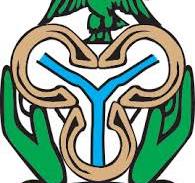How to Remove FHA Mortgage Insurance:
If you purchased a home with an FHA loan, you’re likely familiar with the mortgage insurance premium (MIP) that comes with it. While FHA loans offer lower down payment options and are easier to qualify for, the mandatory mortgage insurance can add up over time. The good news is that there are ways to remove FHA mortgage insurance, which can save you a significant amount of money in the long run. In this blog post, we’ll guide you through the steps to remove FHA mortgage insurance, explain when it’s possible, and highlight why it’s a financial move worth considering.
What is FHA Mortgage Insurance?
FHA mortgage insurance is a requirement for all FHA loans. This insurance protects lenders in case borrowers default on their loans. Unlike private mortgage insurance (PMI), which can often be canceled once a homeowner reaches 20% equity, FHA mortgage insurance has different rules for removal, depending on when your loan was originated and your down payment amount.
FHA mortgage insurance is divided into two types:
- Upfront Mortgage Insurance Premium (UFMIP): A one-time payment that is typically 1.75% of the loan amount, paid at closing or rolled into the loan.
- Annual Mortgage Insurance Premium (MIP): An ongoing monthly fee, which varies depending on the loan amount, term, and loan-to-value (LTV) ratio.
Can You Remove FHA Mortgage Insurance?
The ability to remove FHA mortgage insurance depends on several factors, including when your loan was originated and the size of your down payment. Here are the general rules:
1. Loans Originated Before June 3, 2013
If your FHA loan was originated before June 3, 2013, you might be eligible to remove the mortgage insurance once you reach 20% equity in your home. Here’s how it works:
- Down Payment of 10% or More: If you put down at least 10% at the time of purchase, you can request to remove the MIP after 11 years of timely payments.
- Down Payment of Less Than 10%: If your down payment was less than 10%, you can request to remove the MIP after 5 years of timely payments, provided you have 22% equity in your home.
2. Loans Originated On or After June 3, 2013
For loans originated on or after June 3, 2013, the rules for removing FHA mortgage insurance are stricter:
- Down Payment of 10% or More: If you made a down payment of 10% or more, you can remove the MIP after 11 years of timely payments.
- Down Payment of Less Than 10%: If your down payment was less than 10%, the MIP is required for the life of the loan. The only way to remove it is to refinance into a conventional loan.
Steps to Remove FHA Mortgage Insurance
If you qualify to remove FHA mortgage insurance, follow these steps to ensure the process goes smoothly:
1. Determine Your Loan Details
Start by reviewing your loan documents to confirm the origination date, down payment amount, and current loan balance. This information will help you determine whether you’re eligible to remove the MIP.
2. Check Your Home Equity
Next, determine your home’s current market value and calculate your equity. You can do this by comparing your home’s value to your remaining loan balance. If your equity is at least 20%, you may be eligible to remove the MIP.
3. Contact Your Lender
Once you’ve confirmed your eligibility, contact your lender to request the removal of the MIP. Be prepared to provide documentation of your equity and payment history. Your lender may require an appraisal to verify your home’s value.
4. Refinance Your FHA Loan
If your MIP cannot be removed because your loan was originated after June 3, 2013, or if you want to eliminate it sooner, consider refinancing into a conventional loan. Here’s how:
- Improve Your Credit Score: Ensure your credit score is high enough to qualify for a conventional loan with a competitive interest rate.
- Build Equity: Work on increasing your home equity by paying down your mortgage or waiting for your home’s value to appreciate.
- Compare Loan Options: Shop around for the best mortgage rates and terms before deciding to refinance.
- Refinance: Once approved, use the new loan to pay off your FHA loan and eliminate the MIP.
Benefits of Removing FHA Mortgage Insurance
Removing FHA mortgage insurance can have several financial benefits:
1. Lower Monthly Payments
By eliminating the MIP, your monthly mortgage payments will decrease, freeing up more of your income for other expenses or savings.
2. Save Thousands Over the Life of the Loan
Depending on your loan amount and term, removing the MIP can save you thousands of dollars over the life of your mortgage.
3. Increase Home Equity Faster
Without the MIP, a larger portion of your monthly payment goes towards paying down your principal, helping you build equity faster.
4. Potentially Qualify for Better Loan Terms
If you refinance into a conventional loan, you might qualify for better interest rates and terms, further reducing your overall mortgage costs.
Conclusion
Removing FHA mortgage insurance is a smart financial move that can lead to significant savings over time. Whether you’re eligible to remove it based on your loan’s age and equity, or you choose to refinance into a conventional loan, taking action can lower your monthly payments and help you build equity faster.
For more detailed information on FHA mortgage insurance removal and other mortgage-related topics, visit the U.S. Department of Housing and Urban Development (HUD) official website.














